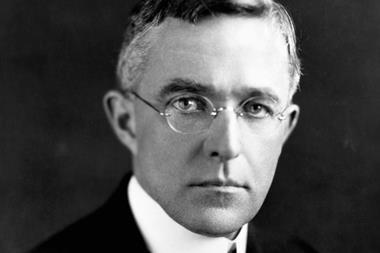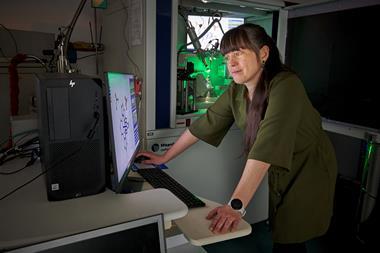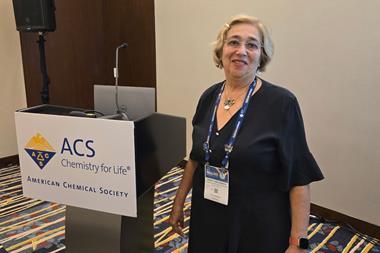How to use an individual development plan to advance your career

When you were young, you were probably asked ‘What do you want to be when you grow up?’ While you may have had a ready answer – ‘I’m going to be a chemist!’ – that was probably as far as your plan went. But now you realise that just having a goal is not enough; you need to figure out how to make that goal a reality.
One of the best things you can do for your career is to have an individual development plan (IDP). An IDP is an organised way of determining where you want to go professionally, and how to get there. It can be as simple as a text document where you track your progress, achievements and goals, or you can use an online or mobile app to lead you through the process. Some tools even help with research into different career options, identify resources, and remind you when tasks or deadlines are due!
Just like the scientific method, career development is a repeating circle of steps. Sometimes you skip a step, or go back and redo one, but in general each answer leads to new questions, and you go around again. You can start almost anywhere, as long as you continue to revise and learn as you go along.
Step 1: Assessment
A logical first step is to figure out where you are currently. What knowledge, skills and abilities do you have to offer to a potential employer – in other words, what are your competencies? You will want to enumerate technical and non-technical skills, domains of subject matter expertise, and so on. Start by thinking about your most significant accomplishments, then list the skills you used to make those things happen. Don’t forget to include accomplishments in your personal life – those skills may be professionally valuable as well.
In addition to competencies, reflect on your personal values. What do you need from your career, and what would be nice to have? For example, you may need to stay in a certain geographic location, but you may want a position that involves leading others or helping the environment. Include whatever parameters are important to you in your plan.
Step 2: Exploration
No matter how much you know about chemistry careers, there are many more possibilities. There are also many nuances, and nomenclature changes across fields – a job that is called ‘project manager’ in one field may be called a ‘business analyst’ or ‘senior scientist’ in another. The more you know about what the possibilities are, the more you will be able to focus your efforts on the path that is right for you. The exploration step is where you learn as much as possible, then narrow down your objectives.
Step 3: Goal-setting
Once you know where you are and where you want to go, you can determine the difference between the two. What are you missing? How can you acquire that missing knowledge, skill or professional connection?
Turn that long-term goal into a series of short-term goals. If you are missing certain skills or knowledge, can you take a class, tackle a new project or accept a volunteer position to fill the gap? If your research uncovered a career path you find interesting, can you connect with people in that field, learn what they do, and how they got started? Breaking your goals into smaller pieces will make them more manageable, and adding specific deadlines will make them more urgent.
You may want to discuss your plan with trusted mentors to ensure you are on a reasonable path. Especially if your career goal is to be more valuable to your organisation, you may wish to discuss it with your supervisor.
Step 4: Action
While a plan is necessary, it is not sufficient on its own. Your plan must be turned into action. Try to do at least one thing for your career each week, and track what you have done. As you check things off the list you will see your skills grow. Eventually, you will be able to confidently present your expertise in these areas. Some of those new skills may be useful in your current job, and can increase your interest and satisfaction with your position. Others may make you more competitive for your dream job.
As you learn more about various career fields, you will be able to go back and refine your career objective. Maybe you took a class to learn a new technique, only to find you didn’t enjoy it as much as you thought you would. Use that information to go back and adjust your goals, create new actions and start the process over again.
You will continue to review and adjust your plan throughout your career, as your own skills, values and circumstances change.
Online IDPs
Pathfinder
Available to Royal Society of Chemistry (RSC) members. This tool allows you to record skills, activities and goals, and can help you search RSC resources related to your career needs.
ChemIDP
Free to anyone who creates an account, this tool takes you through assessing yourself, strengthening your skills, setting goals, and exploring careers. Employment advertisements are integrated into the career exploration section.
EMBL Fellows’ Career Service
This site offers career guidance for early career researchers in the life sciences and related fields, with sections on self-awareness, career info and exploration, making connections, job search, job applications, and job interviews.
MyIDP
Free to anyone, this tool includes a broad range of careers for scientists, not just chemists. It was designed for graduate students and postdocs, but can be used by anyone. MyIDP steps you through self-assessment, career exploration, goal setting and implementation of your plan.
Vitae Career Development Framework
Tools for identifying competencies of successful researchers, as well as some supportive tools
Yale University Individual Development Planning Resources
For those who don’t like interactive apps, Yale University publishes a number of forms and checklists you can adapt to suit your own needs.












No comments yet